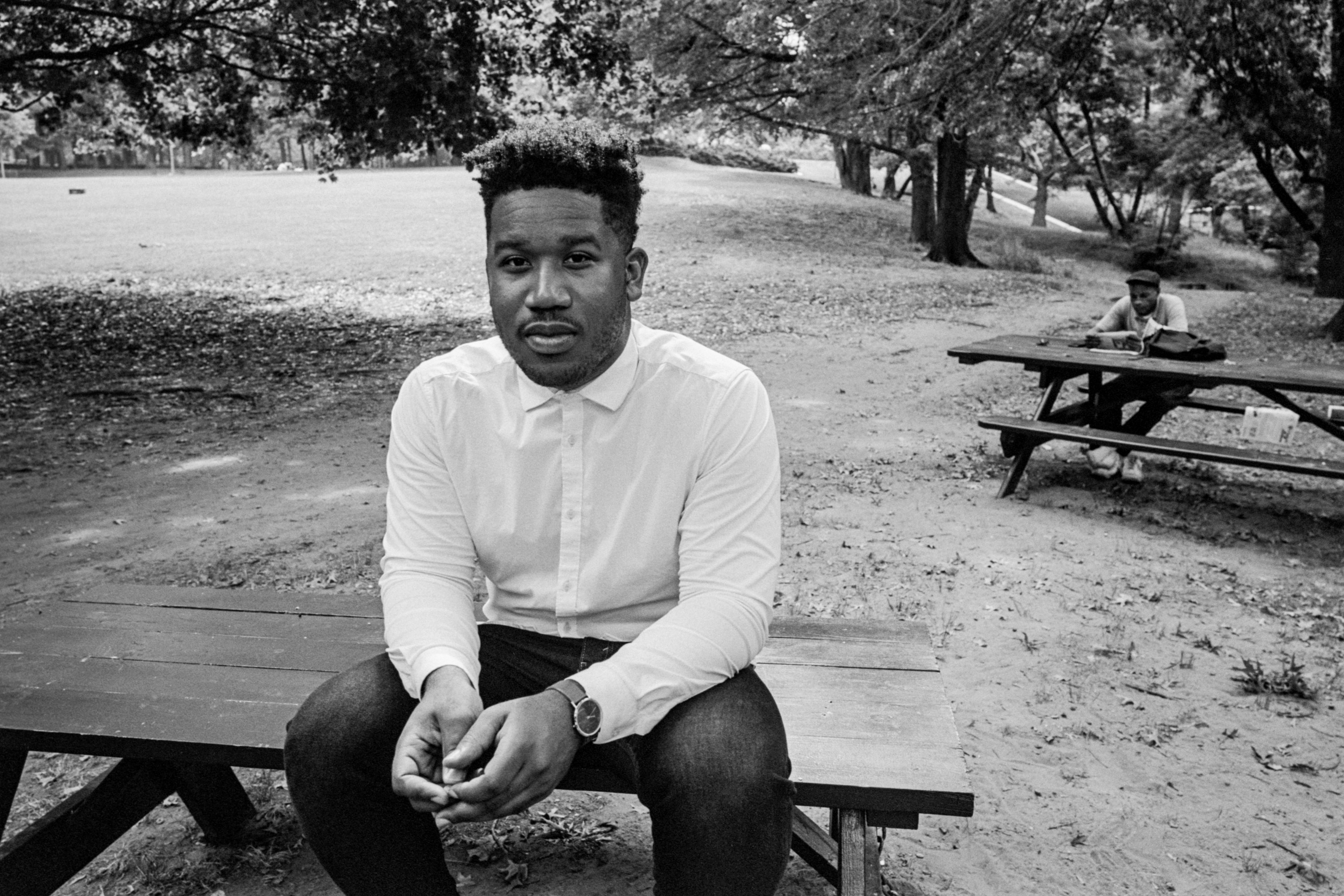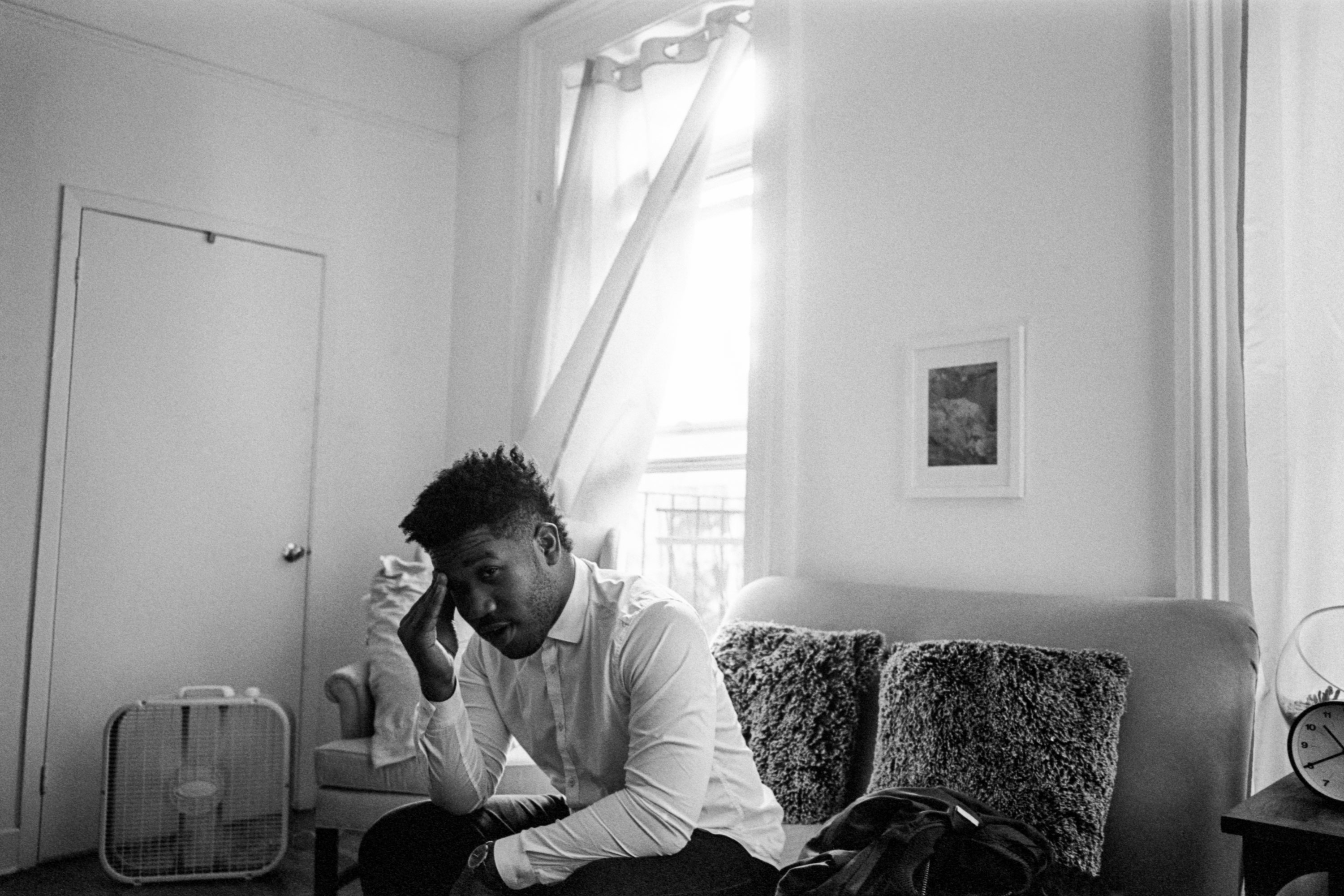
- Interview by Tammi Heneveld October 10, 2017
- Photography by Andre D. Wagner
Aundre Larrow
- photographer
Brooklyn-based photographer, Aundre Larrow, grew up in southern Florida, where he was encouraged to pursue creativity and developed a love of storytelling. Here, he describes how his mother’s sacrifices and work ethic have profoundly influenced his creative life; his decision to move to New York City to build a meaningful career; and how one of his latest projects, Stories From Here, aims to challenge the beliefs and assumptions we have about ourselves and each other.
This digital feature is in partnership with our friends at Adobe to highlight the Adobe Creative Residency, a program that empowers talented individuals to spend a year focusing on a passion project while sharing their experience and process with the creative community.
Can you describe your path to becoming a photographer? I moved to the US with my mom when I was four years old. We lived in Florida, and my mom worked a lot of different jobs to support us and put herself through school. I was looked after by aunts, uncles, or friends until I was old enough to be by myself. My mom was always cool with the idea of me pursuing my creativity, so she gave me painting supplies to entertain myself with while she was at work.
My creativity grew from that point, particularly with telling stories. I used to watch the news and sports on TV with my mom all the time. One of my strongest memories is being a 5th grader and watching Peter Jennings’ coverage of the September 11th attacks on ABC News. That way of storytelling has always been incredibly interesting to me, and photography spoke to me in that way, especially portraits of people. When my high school theater teacher, Lee Tempest, gave me a Minolta Srt–101 camera when I was 15, I’d constantly take photos of my friends and go spend all my money at Walgreens to develop the film.
That interest in storytelling led me to study journalism at the University of Florida from 2009 to 2013. They have a very good newspaper program, but I didn’t care for it much—I became more interested in the cool things they were doing with multimedia. When I started working for the student newspaper, the Independent Florida Alligator, I didn’t like the idea of writing on deadline, so I shot photos instead. I love sports, so I’d shoot Florida basketball, football, and women’s softball. I didn’t realize it at the time, but those assignments were training me to deal with all sorts of different situations as a photographer when it comes to lighting, setting up shots, talking to people, and learning to use my equipment.
Grooveshark, the music streaming service, was based in Gainesville, and one of my good friends was their social manager. One day I randomly ran into him and he asked me if I wanted to intern there. He said, “We can’t pay you, but we have free food and laundry facilities, and you could learn a lot.” I didn’t really have any other options at the time, so I said okay and lived in my friend’s living room for $100 a month. I had zero privacy, but it didn’t really matter; I was excited about learning to be a brand storyteller outside of the editorial sphere.
That year, I took a trip to New York City to help shoot a documentary with Grooveshark. Something about the city stuck with me, and I decided to move there shortly after my internship ended. I went to live up in my uncle’s attic in Brooklyn, which was hot as all hell, but I was just grateful I wasn’t out on the street. (laughing) My main goal was to see if I could create one big photography project I was proud of within a year. My second goal was to meet someone new in the creative industry and eat with them every week. My mom helped me pay for it, so I wouldn’t have to freak out about a $30 meal. (laughing)
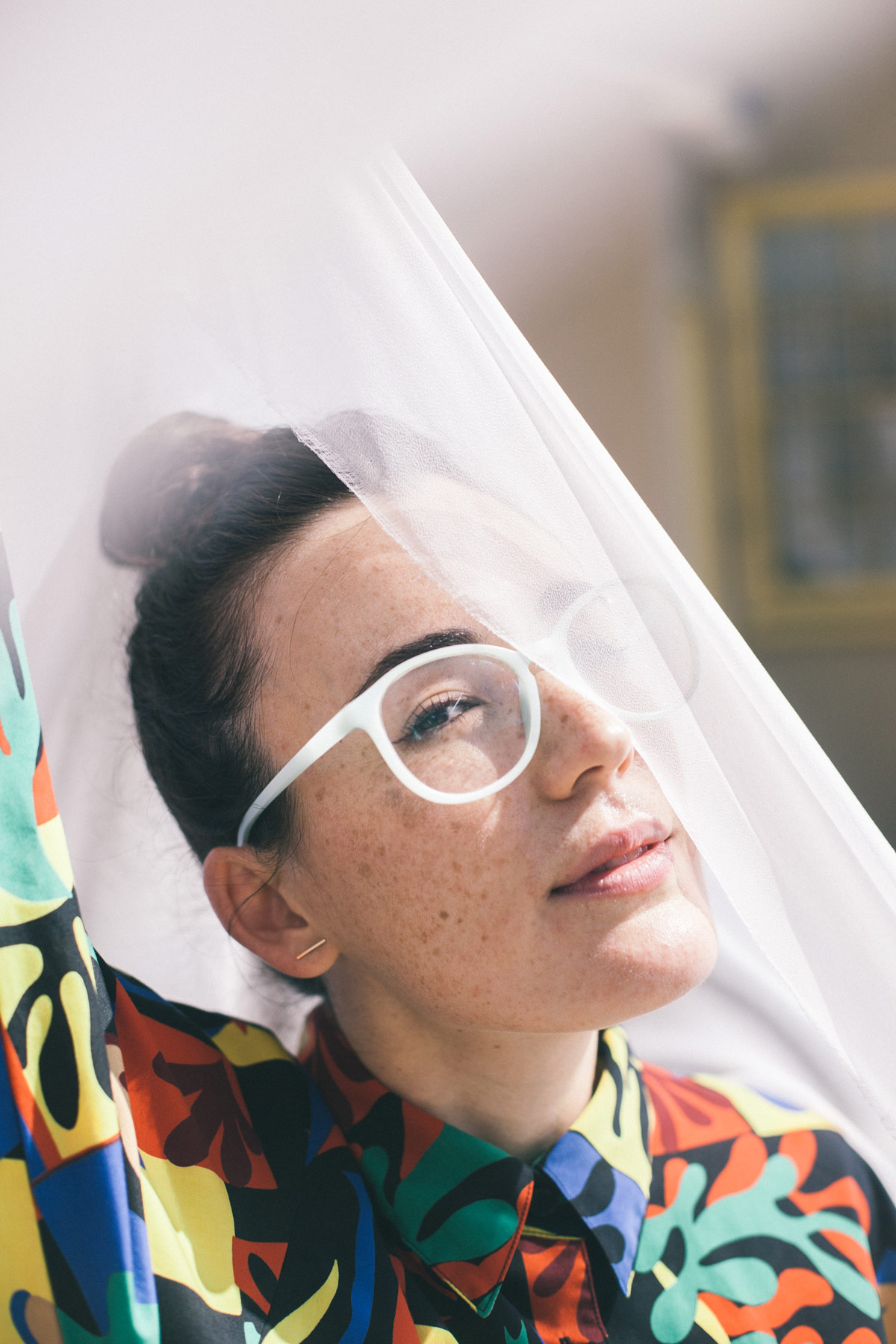
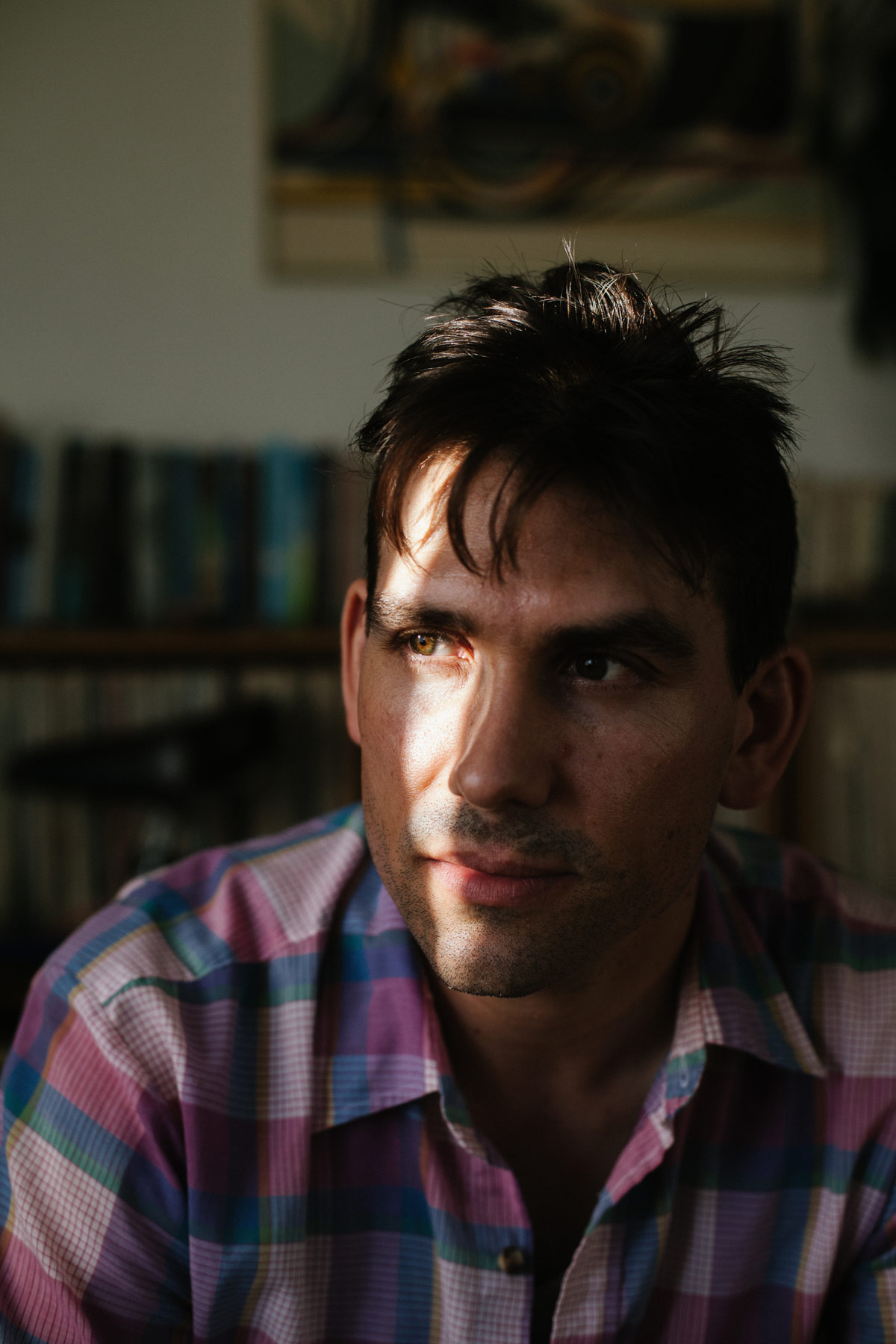
“I didn’t realize it at the time, but those [sports photography] assignments were training me to deal with all sorts of different situations as a photographer.”
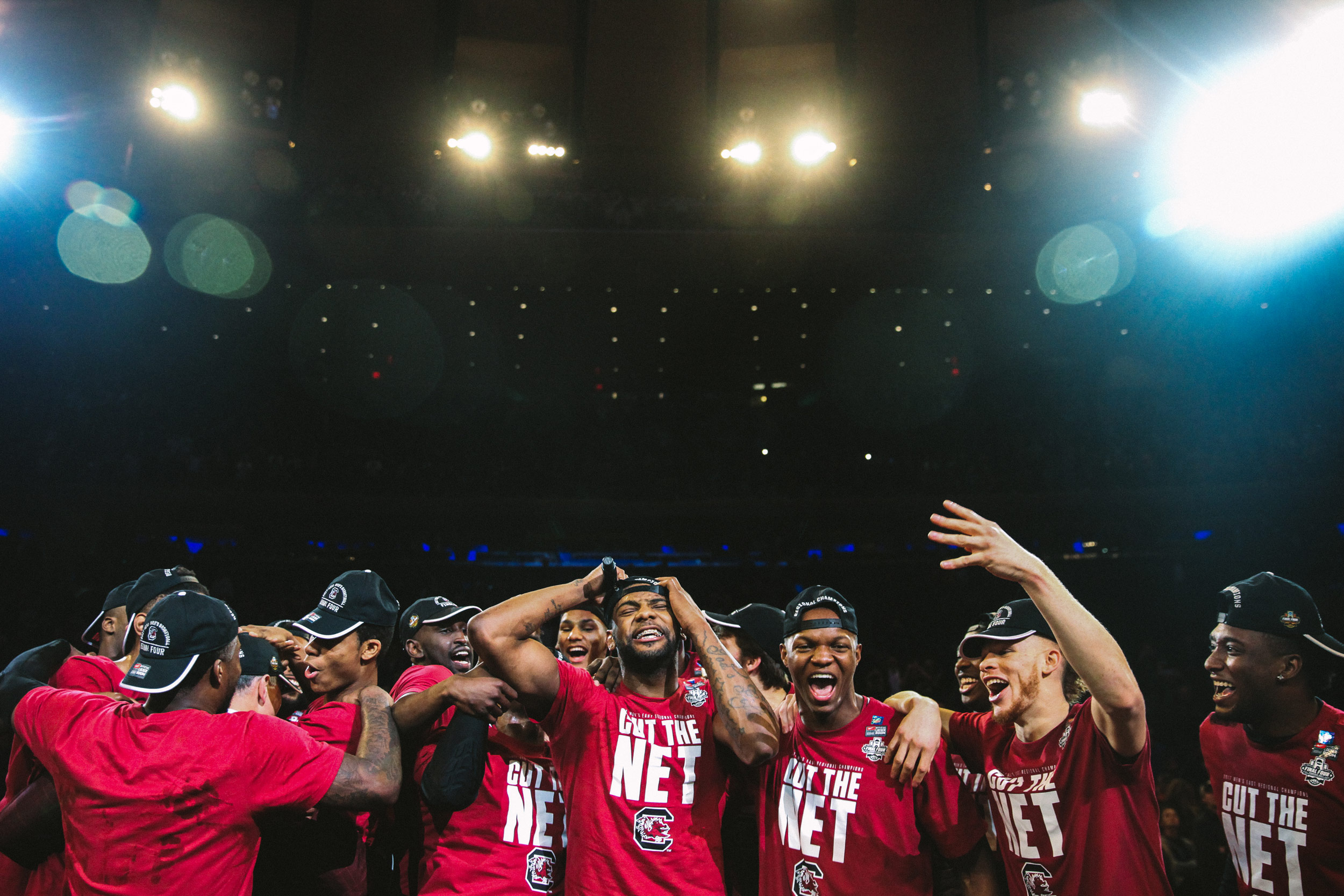
What unique opportunities have you had as a result of your choice to pursue photography as a career? I figured, if I met enough people and showed them what I did, I’d eventually be able to land some opportunities. And I did: I took jobs shooting parties for ad agencies, asked people how they got started at those agencies, and showed them my work. In between those meetings, I was shooting apartments, weddings, and photos of people’s kids.
Eventually, I was hired as a creative for a start-up called Walker & Company. The product I worked on there was Bevel, a shaving system designed for men of color. Another project I worked on was a Valentine’s Day campaign featuring two gay black men, which isn’t normally a big deal, but it’s just not something you see often in the black community. My coworker, Quinnton Harris, and I worked closely on it, so it was awesome to see it receive a lot of positive publicity, which helped get my name out there a little bit more.
Walker & Company’s then-creative director, Mari Sheibley, really pushed me to think about myself as an artist and not just a brand photographer. It was a funny concept to me, because I had been trained to think of commercial photography as beneath art. But Mari explained that if you approach commercial projects like you would any other creative work—like drawing, painting, or writing—they can be meaningful, too.
When I left my job at Walker & Company, I went from having the guidance of a great creative director at a full-time job to taking three months off the figure things out. Even if you have something like $30,000 in savings, you can burn through that living in New York City—not even doing crazy stuff, just being a person. (laughing) That could have ended poorly, but it worked out; I shot a couple jobs that popped up here and there, and I had friends in the industry who recommended me for gigs. I was lucky enough to be able to shoot New York Fashion Week and an NCAA tournament after taking that time off.
Can you tell me about the projects you’re working on during your Adobe Creative Residency? I wanted to do a project that would force me to listen to a bunch of strangers for a whole year. I decided to go with a sense of place: small towns, big towns, churches, homes people grew up in—anywhere that holds a sense of home for people. I take their photos, interview them, film them, and make audio recordings of their stories; then I create a story to include in an online collection for people to experience. I’m calling it Stories From Here.
Since starting the project, I’ve gained a sense of understanding from the subjects I’ve chosen. If anything, I’ve made something that forces me to step out of myself and be shown another perspective on things. For instance, I just finished an interview with a guy named Alex Laferriere, who is a CODA: Child Of a Deaf Adult. In it, he talks about how jazz music gives him a sense of home because his parents listened to it all the time when he was growing up. I asked, “I don’t mean to be rude, but—you guys listen to music in your house?” And he said, “There’s more than one way to enjoy a song.” He said to strip away music’s meaning for people who are on the spectrum of deafness is completely absurd; it’s like assuming that English is the dominant language and that anyone who speaks a different language has a weaker understanding of communication itself.
The residency asked us to push ourselves, so I’m doing two more projects apart from Stories From Here. The first one is called Headed to Church Avenue, which is a small street photography project focused on the massive changes the G Train is undergoing right now. The second project is called Please, No Nikes at the Pool, which is a film and photo project about the CDC statistic that African American kids are five times more likely to drown in pools than white kids.
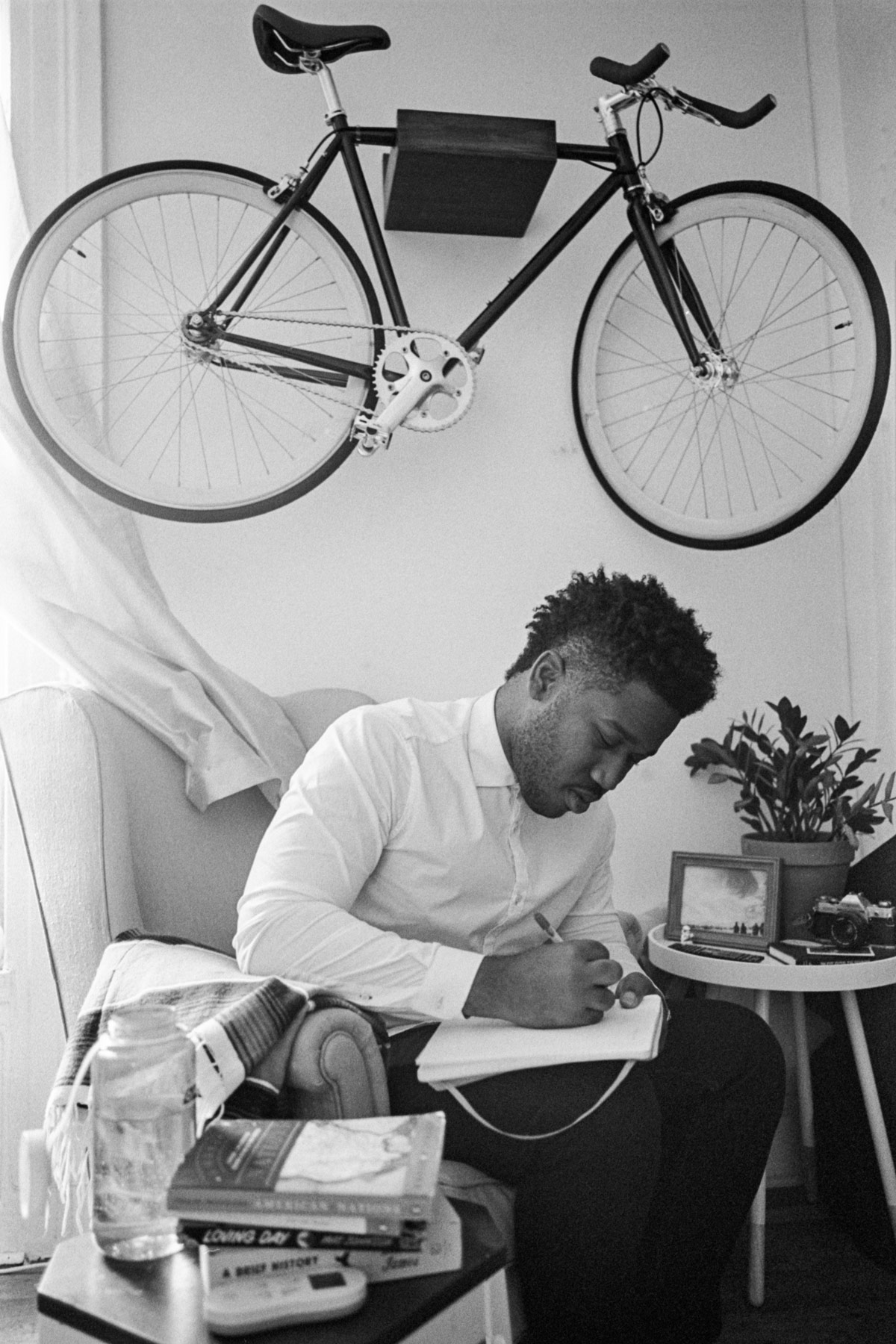
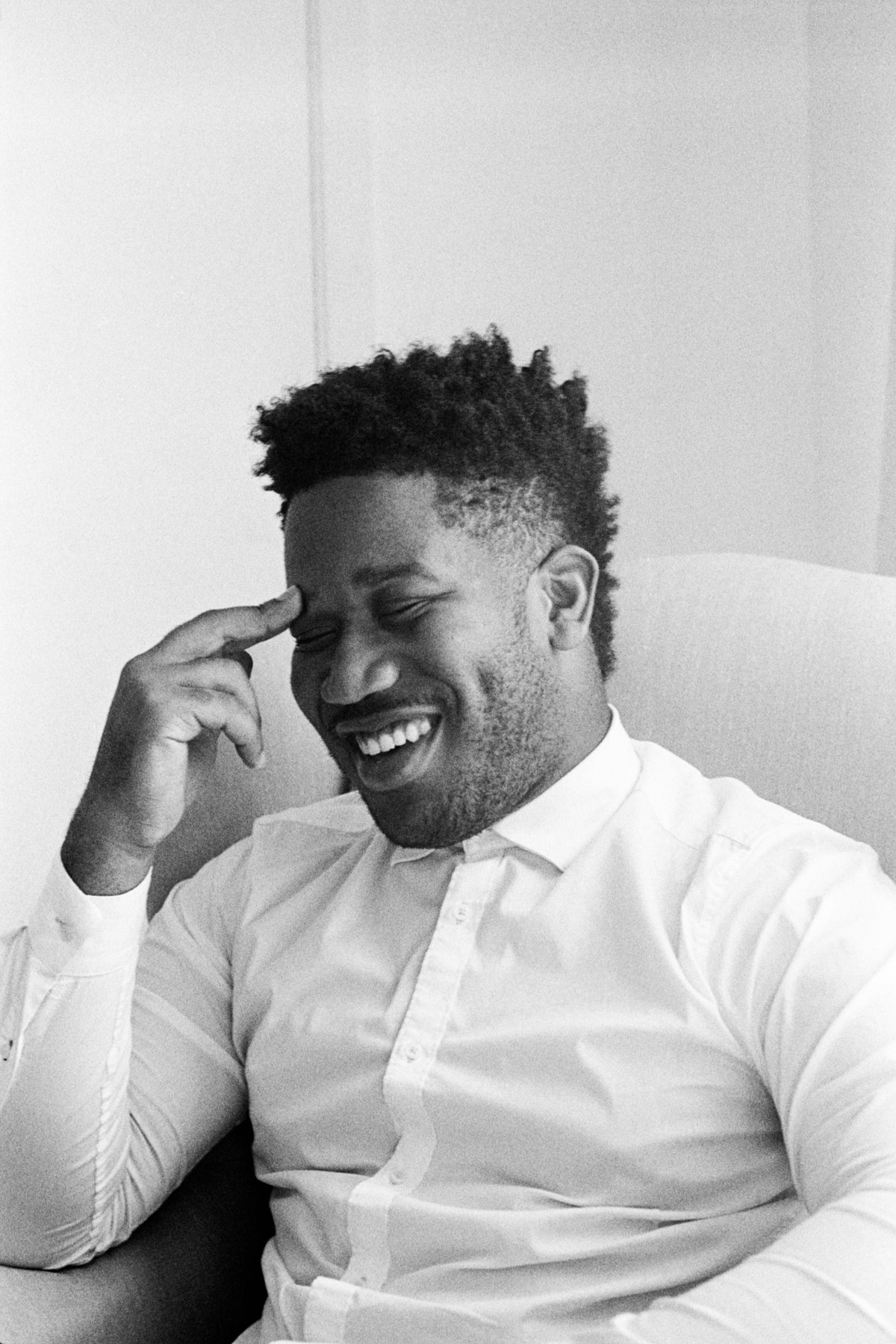
What advice would you give to someone just starting out in photography? First: Do not be stupid hard on yourself; everything takes time. Second: Follow all of the people whose work you think is interesting, and make any excuse to talk to them and learn by being around them. Third: It’s important to persevere, but if certain doors keep closing, or if something seems like it’s not a good fit, then it’s okay to try something different. Last: That whole I’ll-sleep-when-I’m-dead work ethic is complete garbage. (laughing) There’s no reason to exhaust yourself—nothing is that important, and it’s unrealistic as hell.
Biggest creative risk you’ve taken in your career: Leaving my job at Walker & Company—I had gained enough experience that I felt I could make it on my own.
One thing you can’t live without while working on a project: My phone—honestly, it’s what keeps me grounded.
Currently obsessed with (in no particular order): Basketball, On the Road by Jack Kerouac, buying shoes, Lebron calling Trump a bum, The Office, “Because the Internet” by Childish Gambino, bird of paradise plants, Desus & Mero, NFL players kneeling in unison.
Three greatest influences:
- My mom. She earned her bachelor’s and master’s degrees while working full time—it’s very important that she understands how much her sacrifices mean to me.
- One of my best friends, Patrick, who died two years ago. He was kind and positive, and always reminded me not to be so hard on myself.
- The creative people in my life, like photographers Sasha Arutyunova and Ike Edeani; videographer Katrina Sorrentino and her musician husband, John.
Favorite space to work: My home—I like how the light changes throughout the day, and I get to sit near my beautiful bird of paradise.
If you weren’t a photographer, you’d be: Working in an NBA agent’s office. 
